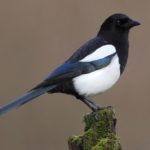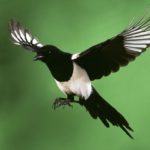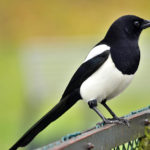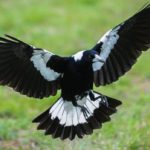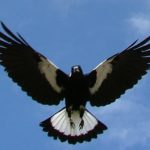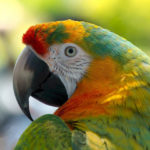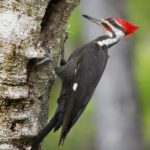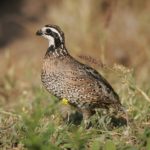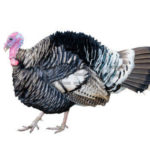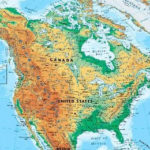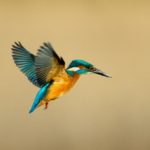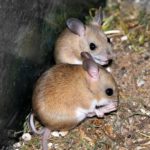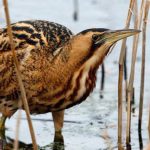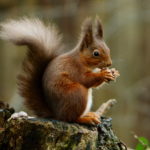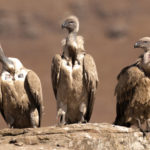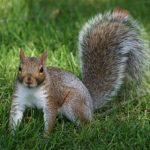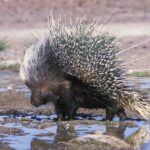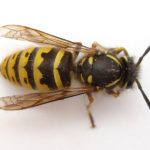Magpies
 Magpies live in Europe, Asia, North America and North Africa. A bird more often settles nearby a person. Often in forest parks, in urban parks and gardens. In the large forests magpies live less often. They are not seen in the highlands and the Far North. Forty people are in the Nordic countries.
Magpies live in Europe, Asia, North America and North Africa. A bird more often settles nearby a person. Often in forest parks, in urban parks and gardens. In the large forests magpies live less often. They are not seen in the highlands and the Far North. Forty people are in the Nordic countries.
Magpies live in small flocks or singly. During the nesting period, they are kept in pairs. Birds willingly eat insects, lizards and mice, drink bird eggs. Their menu includes many pests. The omnivorous magpie spits sunflower seeds, various herbs, watermelons, melons, etc.
Recently, four magpies began to fly to the trough near our house, which always has crumbs of bread and croup for tits and sparrows. Magpies can not get into the trough, so they are satisfied with the crumbs that fell to the ground from above. These birds noisily chase each other, trying to be closer to eating. Magpies are not used to us yet, so they fly away in a moment, frightened of any movement. Therefore, it is difficult to photograph them.
The flight of forty is considered heavy. They often flap their wings, usually fly in a straight line. When the magpie is on the ground, she paces or moves with jumps. In the East of Russia, in East Asia and on the Iberian Peninsula, a smaller blue magpie (Cyanopica cyanus) with bluish winged wings lives (34 cm in length). Some authors distinguish the Siberian blue magpie (living in Siberia) and the Spanish blue magpie (from Spain). A significant part of ornithologists unites these beautiful birds in a single species.
In addition to these species there is also the Chinese azure magpie (East China), the red-bellied magpie magpie (Himalayas – Nepal) and the green magpie (Himalayas, Indochina, Malaysia).
In the forests of South Asia, magpies live from the subfamily of the long-tailed forty. In India, China and the Himalayas there are wandering (English) magpies, which belong to the forest magpie (Bram).
Magpies form stable pairs. A nest is built by both birds. They build a spherical structure of hard branches, leaves and clay. The nest inside is lined with litter of grass, thin rootlets and scraps of animal fur. On the side there is an entrance near which a tray is molded from the clay. Roof magpies made from boughs. Nest is more often on tall trees and shrubs, less often – in a low bush. In the masonry there are 5 – 8 spotted bluish-green eggs.
The forty-female incubates eggs for about 18 – 20 days. A. Bram notes that she continues hatching eggs even when a shot is stuck in her body. The forty-male protects the nest and feeds the female several times per hour!
The chicks remain in the nest for 3 – 4 weeks. Magpies are bold and caring parents. Adult birds feed their chicks with small insects, beetles, worms, snails, and later nestlings of small birds (finches, tits, etc.). Therefore in the spring magpies so often engaged in robbery, ruining bird’s nests.
